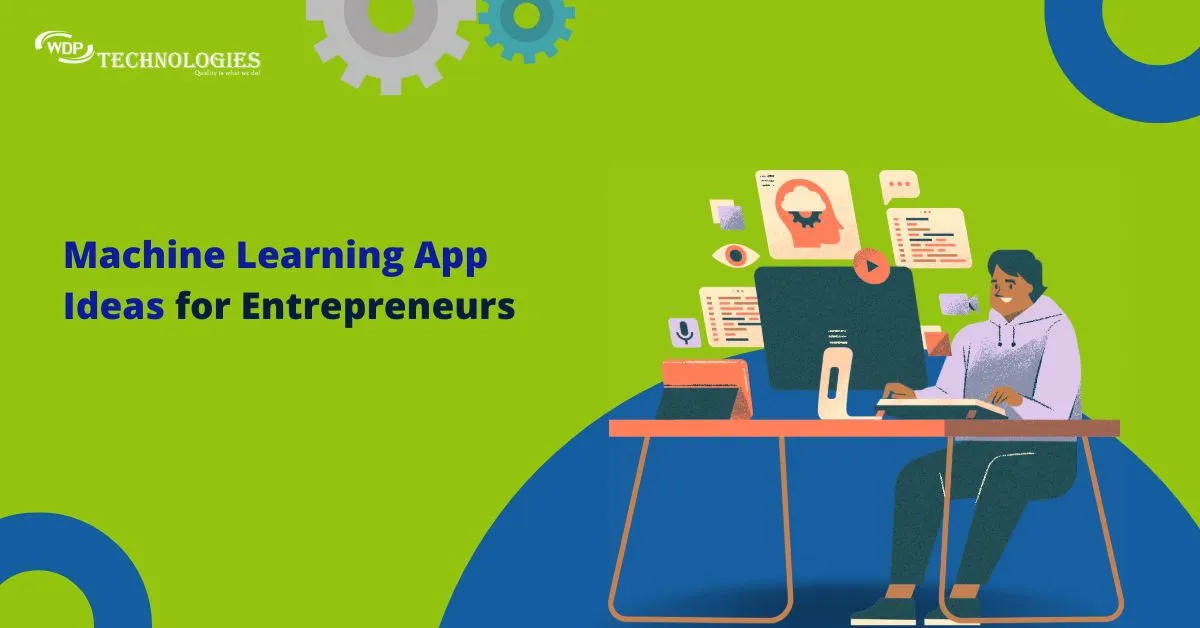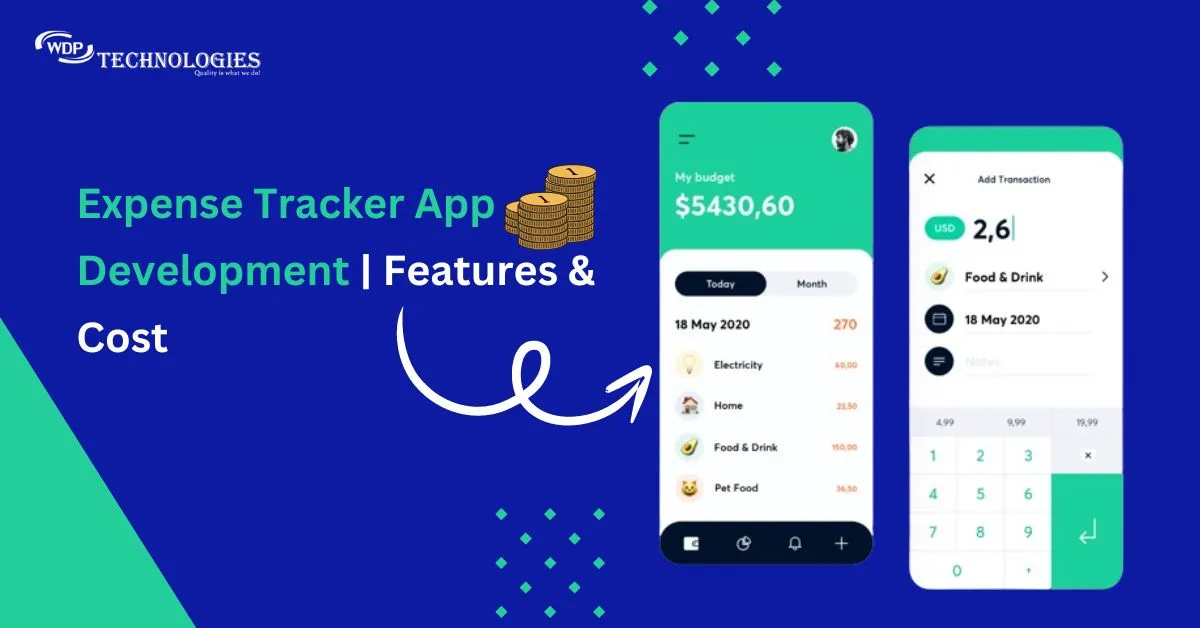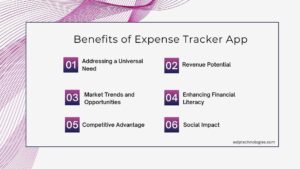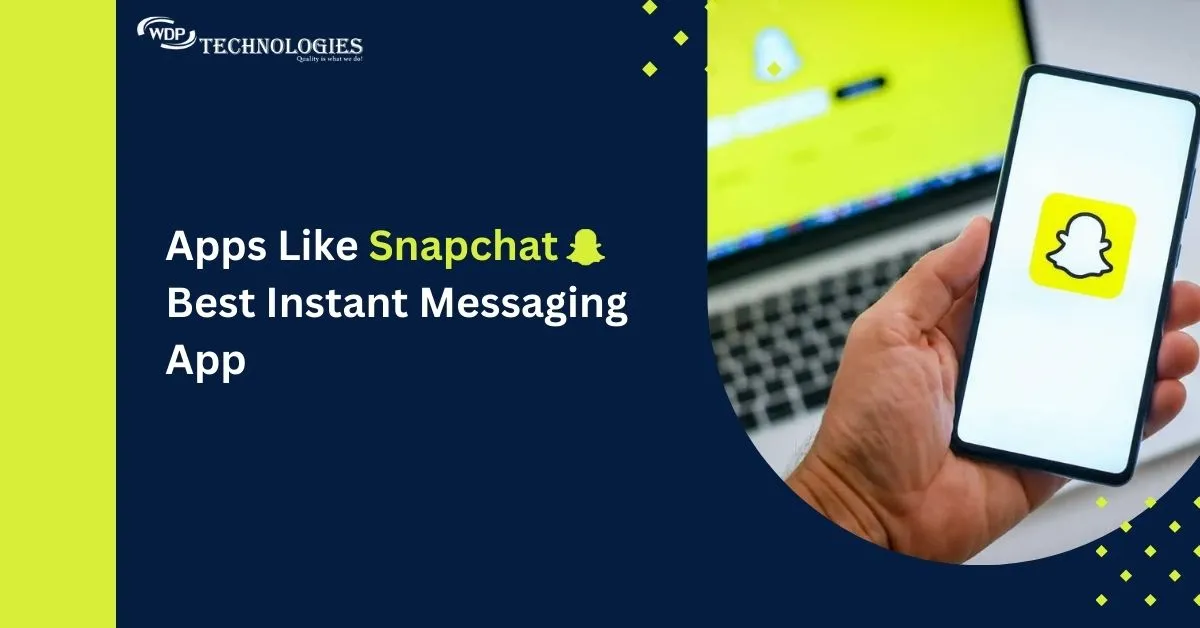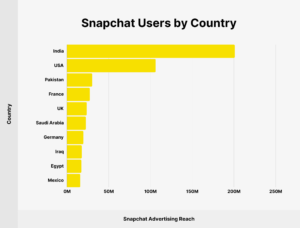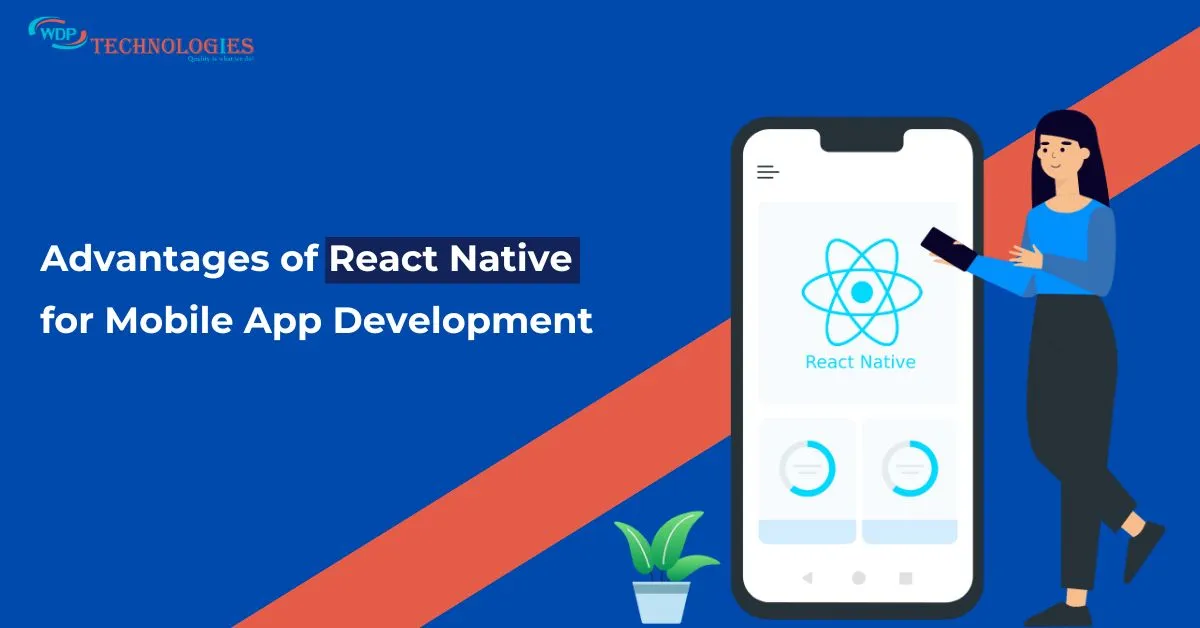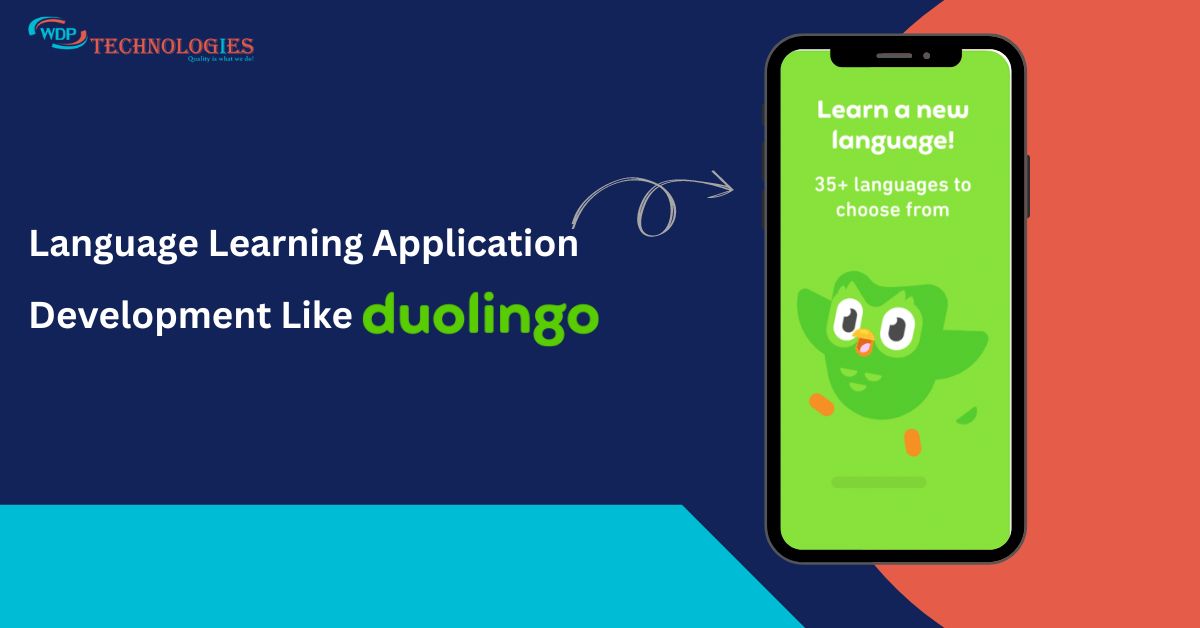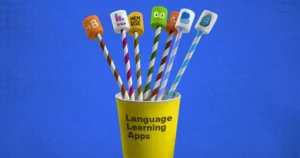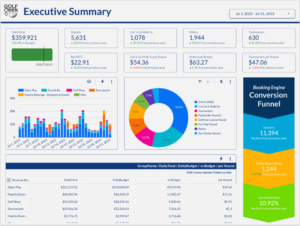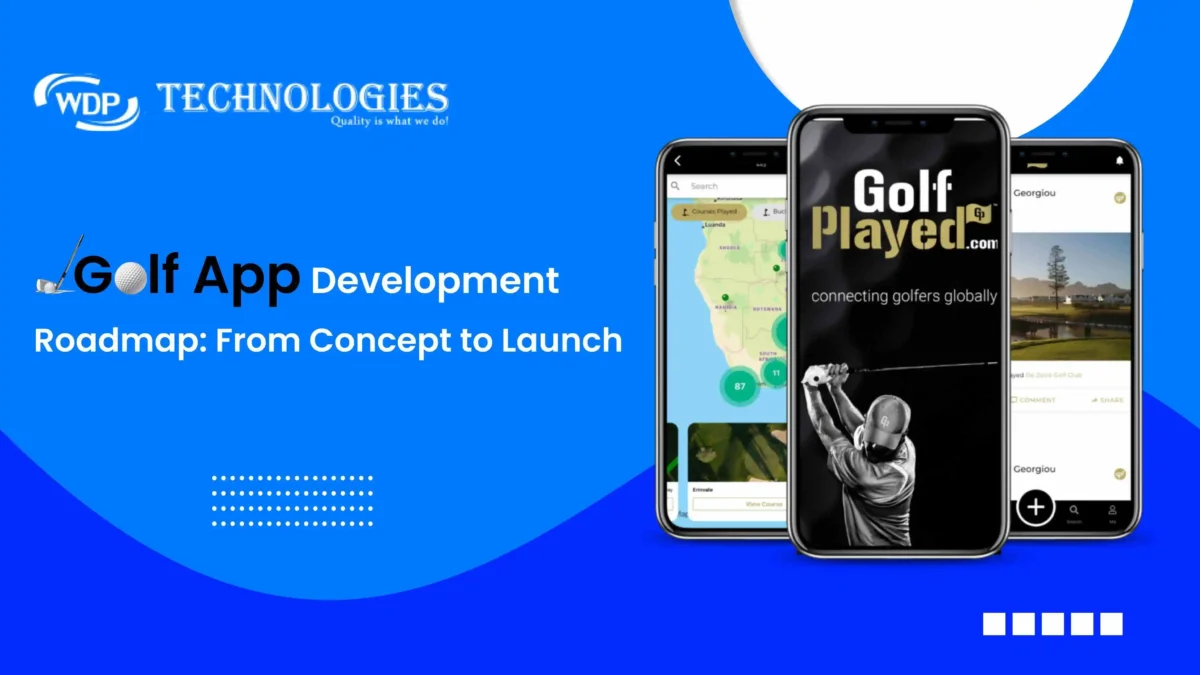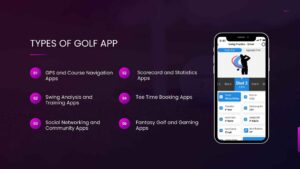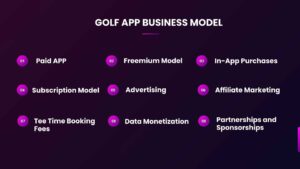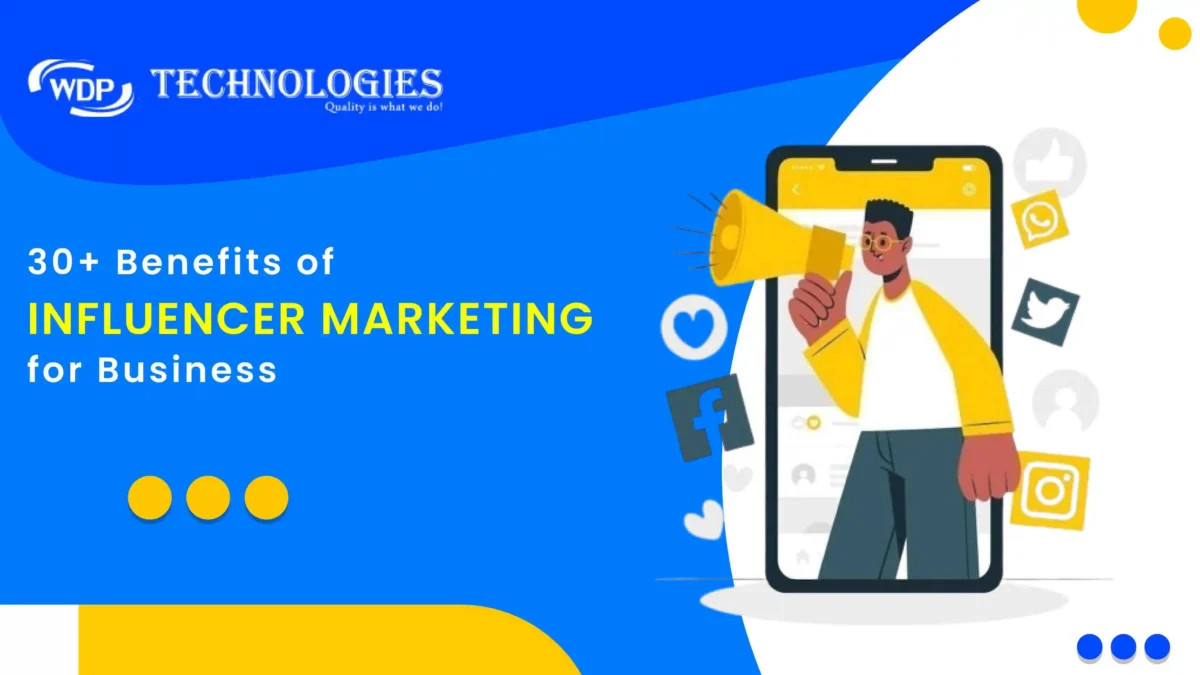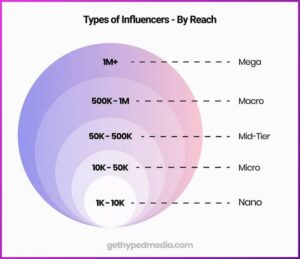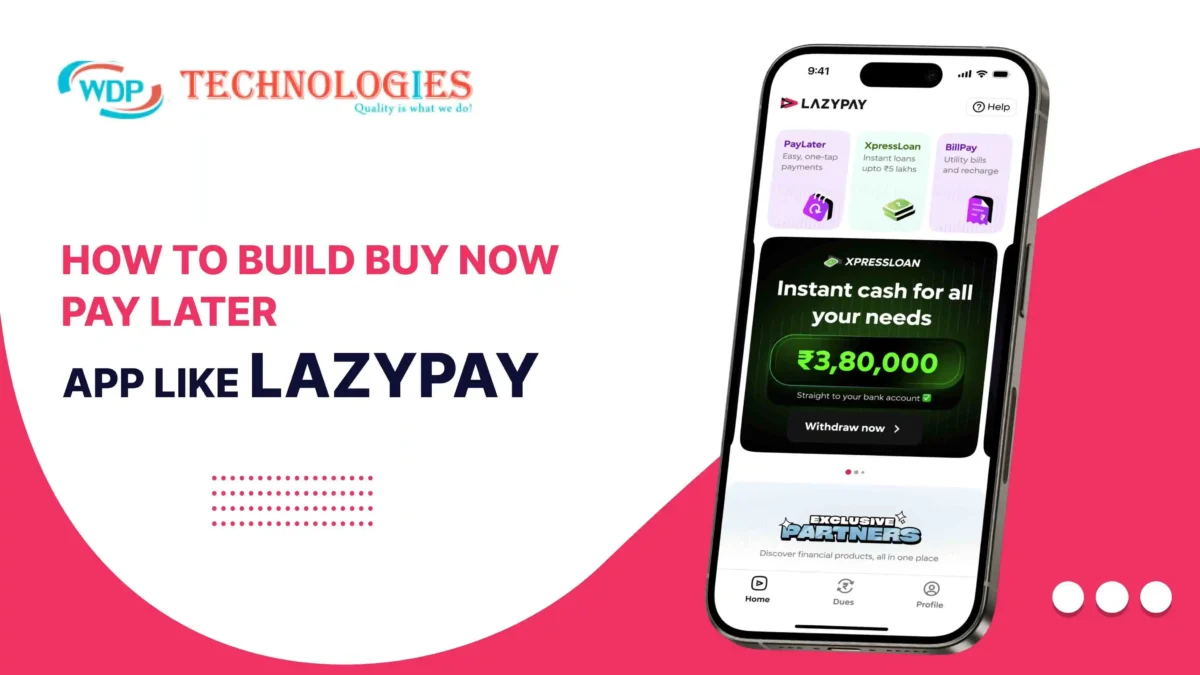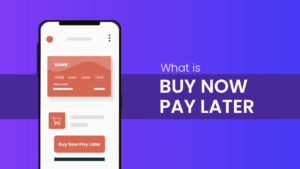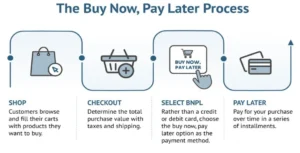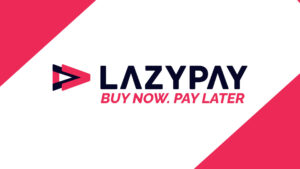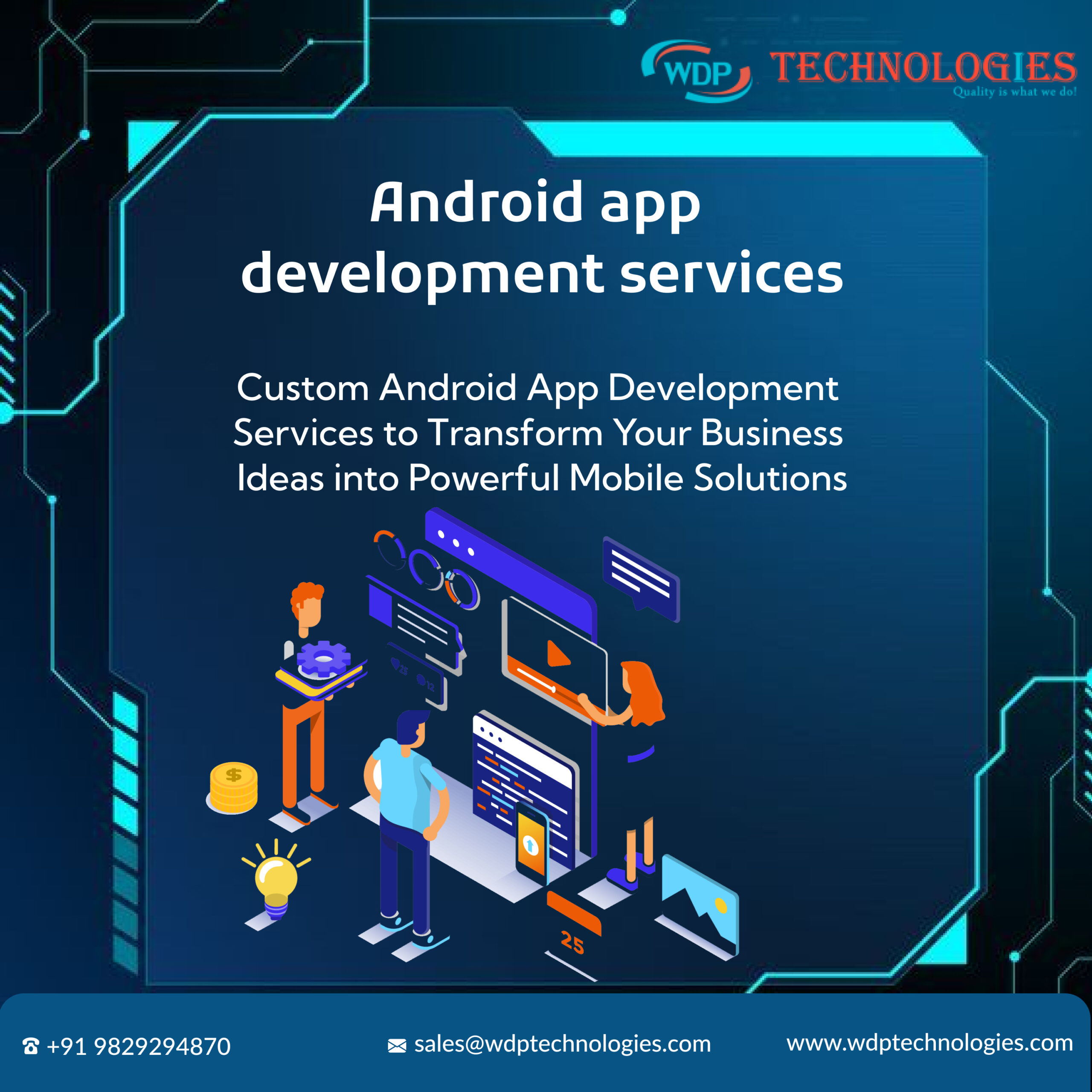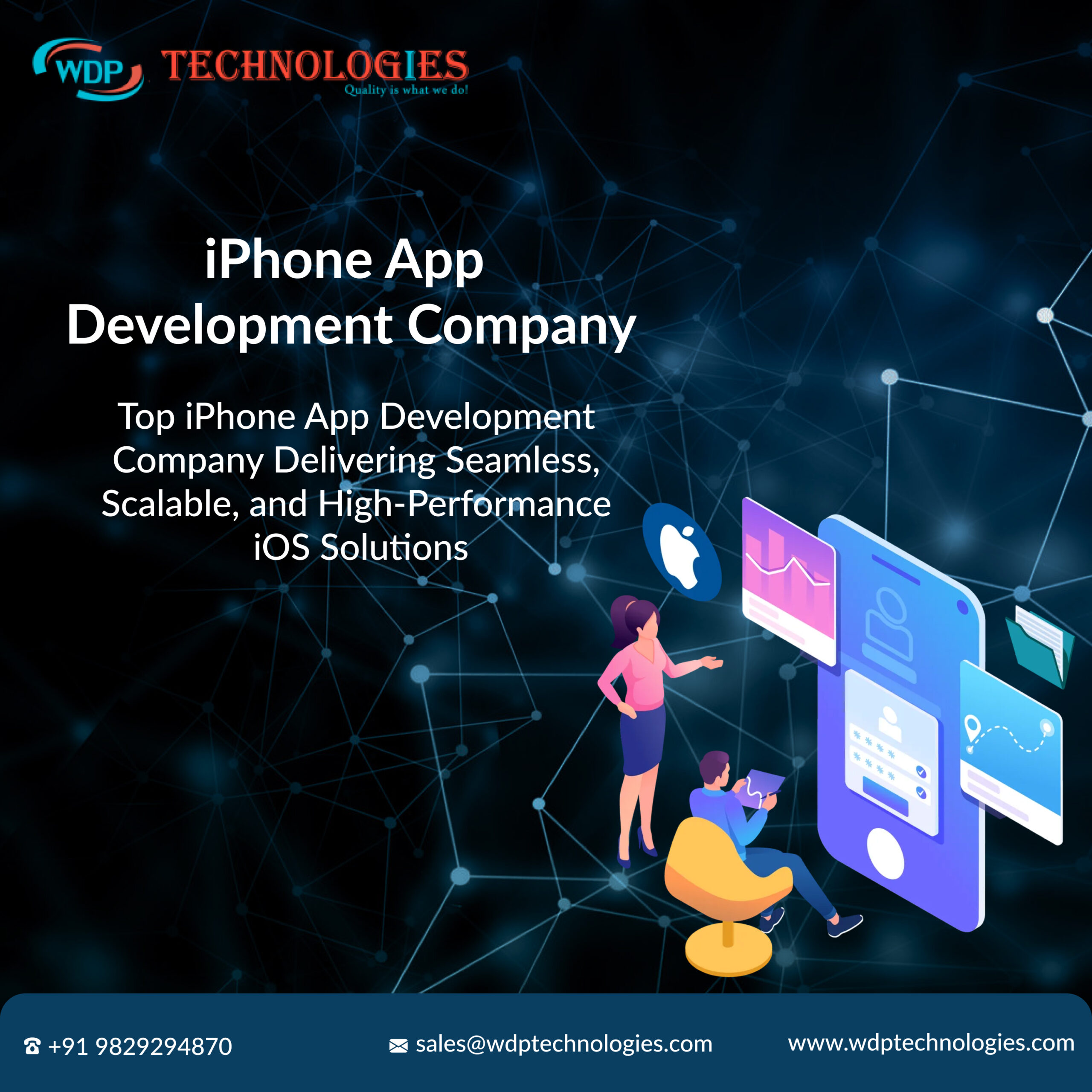Imagine a world where your phone can predict your to-do list, a fitness app that crafts personalized workouts, or even a doctor’s assistant that helps detect illness early. Believe it or not, these aren’t scenes from a futuristic movie – they’re all within reach thanks to the power of machine learning (ML).
Machine learning is rapidly transforming industries and reshaping how we interact with technology. But have you ever stopped to think about how this powerful tool can be used to create apps that not only make our lives easier, but truly make a difference?
This blog post is your path into the exciting world of machine learning app ideas. We’ll delve into innovative concepts across various fields, from boosting your productivity to revolutionizing healthcare. Buckle up and get ready to explore how ML apps ideas can change the world – and maybe even inspire you to create your own!
Benefits of Converting Machine Learning App Ideas into Business
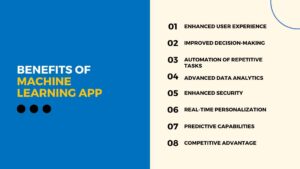
Machine learning is revolutionizing app development by providing powerful tools and capabilities to enhance user experiences, improve decision-making, and drive business growth. As technology continues to evolve, the importance of ML in app development will only increase, making it a crucial element for developers to embrace and innovate upon. Exploring various machine learning app ideas can inspire developers & business owners to create cutting-edge solutions that meet the growing demands of users and businesses alike.
1. Enhanced User Experience
Machine learning (ML) algorithms analyze user behavior and preferences to deliver highly personalized experiences. This tailored approach increases user engagement and satisfaction, making apps more appealing and intuitive.
2. Improved Decision-Making
ML enables apps to process and analyze large volumes of data, facilitating better and faster decision-making. This leads to more efficient operations and optimized outcomes for businesses and users alike.
- Example: Predictive analytics in e-commerce platforms that suggest products based on user browsing history.
3. Automation of Repetitive Tasks
ML automates routine and repetitive tasks, freeing up time for developers and users to focus on more complex and creative activities. Automation improves efficiency and reduces the potential for human error.
- Example: Chatbots providing customer support by handling common queries and issues.
4. Advanced Data Analytics
ML empowers apps to perform sophisticated data analytics, uncovering patterns and insights that would be impossible to detect manually. This capability helps businesses make informed decisions and identify new opportunities.
- Example: Marketing apps analyzing consumer data to craft targeted campaigns and strategies.
5. Enhanced Security
ML algorithms are adept at detecting anomalies and potential security threats. They can continuously learn and adapt to new attack vectors, providing robust protection for user data and transactions.
- Example: Fraud detection systems in banking apps that identify unusual transaction patterns.
6. Real-Time Personalization
ML allows apps to adapt to users’ needs and preferences in real time, creating dynamic and responsive experiences. This real-time personalization keeps users engaged and improves retention rates.
- Example: Real-time traffic and navigation updates in mapping apps like Google Maps.
7. Predictive Capabilities
ML models can predict future outcomes based on historical data, helping businesses and users make proactive decisions. These predictive capabilities are valuable in various industries, from healthcare to finance.
- Example: Health apps predicting potential health issues based on user data and lifestyle choices.
8. Scalability
ML solutions can scale efficiently to handle increasing amounts of data and users. As apps grow, ML systems can adapt and continue to provide accurate and relevant insights.
- Example: Social media platforms managing vast amounts of user-generated content and interactions.
9. Enhanced User Retention
By delivering personalized and relevant experiences, ML helps retain users over the long term. Satisfied users are more likely to continue using the app and recommend it to others.
- Example: E-commerce apps offering personalized discounts and promotions based on user preferences.
10. Competitive Advantage
Integrating ML into app development provides a competitive edge in the market. Businesses that leverage ML effectively can differentiate their products and services, attracting more users and staying ahead of competitors.
- Example: Fitness apps using ML to offer unique and adaptive workout plans.
20 Machine Learning App Ideas for Entrepreneurs
Machine learning offers opportunities for entrepreneurs to innovate and create impactful applications across various industries. These machine learning app ideas not only address existing market needs but also pave the way for new business models and revenue streams. As ML technology continues to evolve, the potential for developing groundbreaking apps will only grow, making it an exciting area for entrepreneurial exploration.
1. Personalized Shopping Assistant
A personalized shopping assistant app leverages machine learning to provide users with tailored product recommendations based on their preferences, browsing history, and purchase behavior. By analyzing patterns in user interactions, the app can suggest products that align with the user’s tastes and needs, enhancing the shopping experience. Additionally, the app can offer personalized discounts and promotions, helping businesses increase sales and customer loyalty.
2. Health Monitoring and Diagnostics
This app uses machine learning to analyze health data from wearable devices and other health sensors. It can track metrics like heart rate, sleep patterns, and physical activity to provide users with insights into their health. Moreover, the app can predict potential health issues by recognizing early warning signs from the data, enabling users to take preventive actions or seek medical advice promptly. It can also offer personalized health tips and recommendations to maintain a healthy lifestyle.
3. Virtual Personal Trainer
A virtual personal trainer app employs machine learning to create customized workout plans tailored to the user’s fitness goals, current fitness level, and progress. By analyzing data from fitness trackers and user feedback, the app can adjust workout routines to ensure they remain challenging and effective. It can also provide real-time feedback on exercise form and performance, helping users improve their workouts and achieve their fitness goals more efficiently.
4. Language Learning App
This app utilizes machine learning to adapt language lessons to each user’s learning style and pace. By analyzing user interactions, the app can identify areas where the user struggles and provide additional practice or alternative explanations. Real-time feedback and personalized challenges help reinforce learning, making the process more engaging and effective. The app can also incorporate speech recognition to help users improve their pronunciation and speaking skills.
5. Smart Home Automation
A smart home automation app uses machine learning to predict and automate the behavior of home devices based on user habits and preferences. It can learn routines, such as when the user typically adjusts the thermostat or turns on lights, and automate these actions to improve convenience and energy efficiency. The app can also optimize the performance of home appliances, reducing energy consumption and costs. Integration with voice assistants allows users to control their smart home with simple voice commands.
6. Financial Advisor
This app leverages machine learning to analyze users’ financial data, such as spending patterns, income, and investments, to provide personalized financial advice. It can predict future expenses, identify opportunities for savings, and suggest investment strategies tailored to the user’s financial goals. By continuously monitoring financial transactions, the app can alert users to unusual activity or potential fraud, enhancing financial security. The app can also provide budgeting tools to help users manage their finances more effectively.
7. Real-Time Language Translation
A real-time language translation app uses machine learning to translate spoken or written language instantaneously. It can recognize and process multiple languages, allowing users to communicate seamlessly across language barriers. The app can be particularly useful for travelers, businesses, and educators, enabling real-time conversations and document translations. Advanced features like context-aware translations and slang interpretation make the translations more accurate and natural.
8. Personalized News Aggregator
This app curates news articles based on user interests and reading habits using machine learning. By analyzing the types of articles users read and engage with, the app can recommend news content that aligns with their preferences. Users can receive personalized news feeds, ensuring they stay informed about topics that matter to them. The app can also filter out fake news and provide reliable sources, enhancing the quality of the news consumption experience.
9. Fraud Detection in Transactions
A fraud detection app employs machine learning to analyze financial transactions and identify patterns indicative of fraudulent activity. By monitoring transactions in real-time, the app can detect anomalies and alert users to potential fraud, preventing financial losses. The app can also learn from past fraud cases to improve its detection capabilities over time. Businesses can use the app to enhance security measures and protect customer data, building trust and confidence among their users.
10. Smart Inventory Management
This app uses machine learning to optimize inventory levels for retailers and warehouses. By analyzing sales data, seasonal trends, and supply chain factors, the app can predict inventory needs and prevent stockouts or overstock situations. It can also suggest the best times to reorder products and optimize storage space. Improved inventory management leads to cost savings, reduced waste, and increased customer satisfaction by ensuring products are always available when needed.
11. Personalized Learning Platform
A personalized learning platform uses machine learning to adapt educational content to the individual needs of each student. It can analyze student performance data to identify strengths and weaknesses, providing customized learning paths and resources. The app can also offer real-time feedback and assessments to help students improve their understanding of the material. By tailoring the learning experience to each student, the app enhances engagement and academic performance.
12. Emotion Recognition App
An emotion recognition app uses machine learning to analyze facial expressions, voice tones, and other cues to detect users’ emotions. This can be useful in various applications, such as customer service, mental health support, and social networking. For example, the app can help customer service agents understand customer emotions during interactions, enabling them to respond more empathetically and effectively. In mental health, the app can monitor users’ emotional well-being and provide support or interventions when needed.
13. Real Estate Price Prediction
This app leverages machine learning to predict property prices based on various factors such as location, market trends, and property features. It can provide buyers and sellers with accurate price estimates, helping them make informed decisions. The app can also analyze market conditions and forecast future price movements, enabling real estate investors to identify lucrative opportunities. By providing valuable insights into property values, the app enhances the transparency and efficiency of the real estate market.
14. Predictive Maintenance for Machinery
A predictive maintenance app uses machine learning to analyze data from sensors and machinery to predict equipment failures and schedule maintenance. By identifying potential issues before they occur, the app can help businesses reduce downtime and maintenance costs. It can also optimize maintenance schedules based on usage patterns and equipment condition, extending the lifespan of machinery. Improved maintenance practices lead to increased operational efficiency and reliability.
15. Customizable Diet & Nutrition Planner
This app uses machine learning to create personalized meal plans and nutrition advice based on user health data, dietary preferences, and goals. It can analyze data from food diaries, fitness trackers, and health records to provide customized recommendations. The app can also suggest recipes, track nutritional intake, and adjust meal plans as users progress toward their goals. By offering tailored nutrition advice, the app helps users achieve a healthier lifestyle.
16. Voice-Activated Virtual Assistant
A voice-activated virtual assistant uses machine learning to understand and execute complex voice commands. It can perform tasks such as setting reminders, sending messages, and controlling smart home devices. The app can learn from user interactions to improve its understanding and provide more accurate responses. Advanced features like natural language processing and context-aware responses enhance the user experience, making the assistant more intuitive and helpful.
17. Content Moderation Tool
This app employs machine learning to automatically filter and moderate user-generated content on social media platforms. It can detect and remove inappropriate, offensive, or harmful content, ensuring community guidelines are upheld. The app can also identify spam and fake accounts, enhancing the quality and safety of online communities. By automating content moderation, the app reduces the burden on human moderators and improves the user experience.
18. Personalized Travel Planner
A personalized travel planner app uses machine learning to suggest travel destinations, activities, and itineraries based on user preferences and past travel history. It can analyze factors like budget, interests, and travel dates to create customized travel plans. The app can also provide real-time updates and recommendations during the trip, enhancing the travel experience. By offering tailored travel advice, the app helps users discover new destinations and make the most of their trips.
19. Job Matching Platform
This app uses machine learning to match job seekers with job openings based on their skills, experience, and career aspirations. It can analyze resumes, job descriptions, and market trends to identify the best matches. The app can also provide personalized career advice and training resources to help users improve their job prospects. By improving the efficiency of the job search process, the app benefits both job seekers and employers.
20. Smart Recipe App
A smart recipe app uses machine learning to recommend recipes based on available ingredients, dietary restrictions, and user taste preferences. It can analyze data from food inventories, past recipes, and user feedback to provide personalized suggestions. The app can also offer step-by-step cooking instructions and nutritional information, making it easier for users to prepare healthy and delicious meals. By simplifying meal planning and preparation, the app enhances the cooking experience.
Also Read: AI App Ideas
Key Considerations for Transforming Machine Learning App Ideas Into Reality
Transforming machine learning app ideas into reality involves several key considerations, from defining clear objectives and managing data to ensuring scalability, privacy, and ethical use. By addressing these aspects thoughtfully, developers can create effective and impactful ML applications that meet user needs and drive business success.
1. Define Clear Objectives
Before starting development, clearly define the objectives of your machine learning app. Understand the problem you want to solve and how ML can provide a solution. Setting specific, measurable goals helps guide the development process and ensures the app meets user needs.
2. Data Collection and Management
High-quality data is essential for effective machine learning. Determine the types of data your app will need and establish reliable methods for collecting and managing this data. Consider privacy and security aspects to protect user information.
3. Choosing the Right ML Model
Selecting the appropriate machine learning model is crucial for your app’s success. Evaluate different models based on their performance, scalability, and suitability for your specific use case. Consider factors like accuracy, training time, and computational resources required.
4. Model Training and Validation
Train your machine learning model using a portion of your data, and validate it with another portion to ensure its effectiveness. Regularly test and validate the model to maintain its accuracy and reliability.
5. User Experience Design
Integrate machine learning seamlessly into the user experience. Ensure the app is user-friendly, with intuitive interfaces that make it easy for users to interact with the ML features. Consider how the app will present recommendations, predictions, or insights to users.
6. Scalability and Performance
Design your app to handle increasing amounts of data and users efficiently. Optimize the performance of your machine learning algorithms to ensure the app remains responsive and reliable as it scales.
7. Continuous Learning & Improvement
Implement mechanisms for continuous learning, where the app can update and improve its models based on new data. This ensures the app remains accurate and relevant over time.
8. Privacy and Security
Ensure that your app complies with data privacy regulations and implements robust security measures to protect user data. Inform users about how their data is collected, used, and stored, and provide options for managing their privacy settings.
9. Monitoring and Maintenance
Regularly monitor the performance of your machine learning models and the overall app. Establish processes for maintaining and updating the app, including fixing bugs, improving features, and incorporating user feedback.
10. Ethical Considerations
Consider the ethical implications of your machine learning app. Ensure that your app promotes fairness, avoids biases, and operates transparently. Address any potential ethical issues that may arise during development and deployment.
The Future of Machine Learning Apps
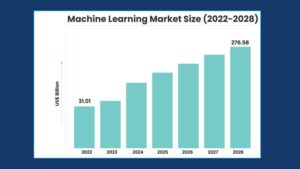
🔹Increased Personalization: Machine learning apps will offer highly tailored recommendations and services based on continuous learning from user interactions.
🔹Enhanced Automation: Machine learning apps will expand automation capabilities, reducing the need for manual intervention and improving efficiency.
🔹Advanced Natural Language Processing (NLP): Machine learning will advance in understanding and accuracy in language-based applications such as chatbots and virtual assistants.
🔹Integration with IoT (Internet of Things): Machine learning apps will seamlessly integrate with IoT devices, enhancing capabilities in smart homes, healthcare, and industrial automation.
🔹Real-Time Data Processing: Machine learning apps will improve in processing and analyzing data in real-time, enabling faster decision-making in finance, healthcare, and logistics.
🔹Ethical AI and Bias Mitigation: There will be a focus on developing ethical AI practices to mitigate biases in machine learning models and ensure fairness in AI-driven applications.
🔹Edge Computing: Machine learning will leverage edge computing to process data closer to the source, reducing latency and improving performance in applications like autonomous vehicles.
🔹AR and VR Integration: Machine learning will integrate with AR and VR for immersive experiences in gaming, education, and training simulations.
🔹Improved Security and Privacy: Machine learning apps will incorporate advanced security measures to protect user data and ensure privacy in AI-driven applications.
Conclusion
The possibilities for machine learning applications are vast and promising. The machine learning app ideas explored in this blog highlight how machine learning can revolutionize various industries and enhance daily experiences. From personalized healthcare insights to advanced automation in smart homes, machine learning apps have the potential to solve complex problems, improve efficiency, and provide unparalleled user experiences.
As technology continues to evolve, embracing these innovative ideas and integrating them into app development can pave the way for groundbreaking solutions that shape the future. Whether you’re aiming to streamline operations, enhance customer engagement, or innovate in new markets, machine learning offers limitless opportunities for entrepreneurs and developers alike. Embrace the future of machine learning apps and embark on a journey of innovation and transformation.

